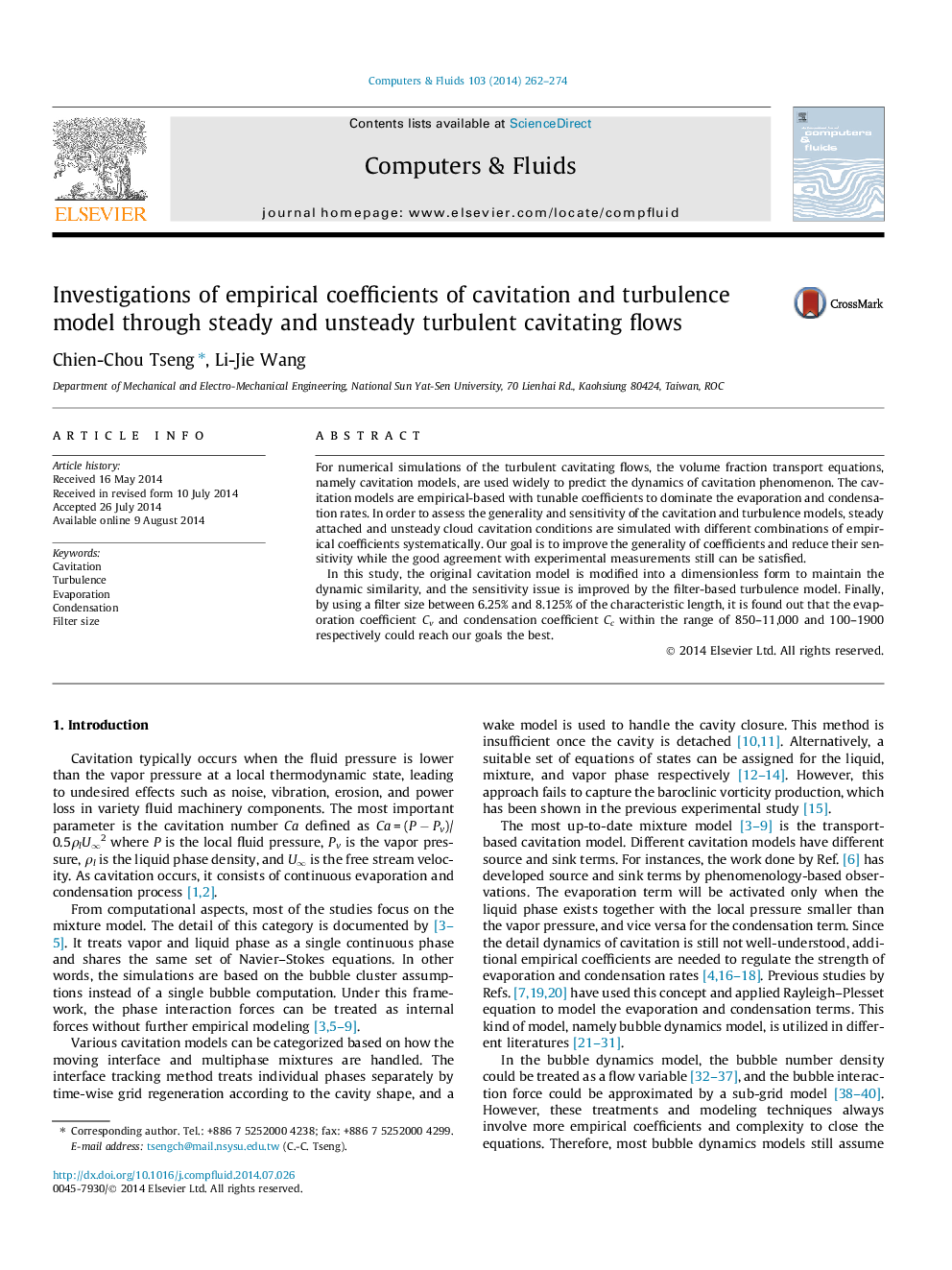| کد مقاله | کد نشریه | سال انتشار | مقاله انگلیسی | نسخه تمام متن |
|---|---|---|---|---|
| 761857 | 1462707 | 2014 | 13 صفحه PDF | دانلود رایگان |
• Modify the cavitation coefficients into dimensionless form to maintain the cavitation dynamic similarity.
• The suitable coefficients are case-dependent and will vary with different turbulence treatments.
• Explore the reasons why the coefficients in different literatures could distribute in a wide range.
• The use of a filter is capable of improving the generality and sensitivity of the coefficients.
• A range of cavitation coefficients with suitable filter sizes is found to reach our goals.
For numerical simulations of the turbulent cavitating flows, the volume fraction transport equations, namely cavitation models, are used widely to predict the dynamics of cavitation phenomenon. The cavitation models are empirical-based with tunable coefficients to dominate the evaporation and condensation rates. In order to assess the generality and sensitivity of the cavitation and turbulence models, steady attached and unsteady cloud cavitation conditions are simulated with different combinations of empirical coefficients systematically. Our goal is to improve the generality of coefficients and reduce their sensitivity while the good agreement with experimental measurements still can be satisfied.In this study, the original cavitation model is modified into a dimensionless form to maintain the dynamic similarity, and the sensitivity issue is improved by the filter-based turbulence model. Finally, by using a filter size between 6.25% and 8.125% of the characteristic length, it is found out that the evaporation coefficient Cv and condensation coefficient Cc within the range of 850–11,000 and 100–1900 respectively could reach our goals the best.
Journal: Computers & Fluids - Volume 103, 1 November 2014, Pages 262–274
